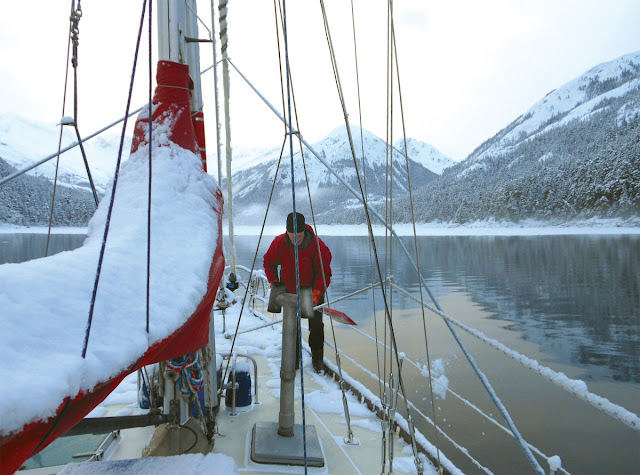10 Tips For Sailing In Winters
Winter sailing may seem like a difficult and frigid endeavor, but with a few easy safety measures, nothing should stand in your way.
Many sailors take advantage of the cheaper costs and enroll in sailing lessons or pass their sailor tests in the winter when sailing schools can teach their students about navigation and night sailing on deserted sailing grounds.
Your sailing season will be extended if you can maintain your boat in the water, and you'll be able to break up the winter with some very memorable cruises. Do you need more winter sailing gear? What should you do to keep your boat prepared for the off-season?
Here are some tips and techniques to help you and your boat prepare for winter sailing.
1. Maintain a full tank of gas
In the winter, it's important to fill up as frequently as possible with fuel and water because the hours that fuel berths are available are likely to be shortened, hoses could freeze, and water supplies might be cut off to protect the pipes, making it difficult to refill your tanks.
2. Fuel supply
Reducing condensation is another incentive to keep your gasoline tank full for the winter. The likelihood of a diesel bug growing is much reduced in a full tank, especially if you additionally use an anti-diesel bug chemical.
3. Motor
It's doubtful that the temperatures would drop below the freezing point for boats left adrift in salt water, but it's still important to take precautions if a particularly cold period is predicted. If you're truly concerned, run some antifreeze through the raw-water system. Make sure the coolant is topped off with the proper mixture of antifreeze.
4. Battery Power
It will take more energy to start a diesel engine in the winter than it does in the summer, so it's important to keep your batteries charged, either with a tiny solar panel or by periodically taking them home for a refresh.
5. Bedding
Consider putting your bedding in a vacuum bag if you're keeping it on board so you can leave right away. If you're not connected to shore power, you can remove the air with a 12V vacuum cleaner. These keep linen and duvets dry and mold-free.
6. Defrost your decks.
Ice-covered decks can be fatal. Fortunately, the solution for vessels traveling in salt water is right in front of you—use the sea! If the air is warmer than the Arctic convoy temperature, removing ice will only take a pail of saltwater and a scrub brush.
7. Create brief passages
It is best to lower your expectations and schedule shorter sails than you would in the height of summer when there are fewer daylight hours. On a chilly day, a quick hop to a favorite location should be more than plenty. Consider leaving earlier so you arrive before dark on longer passages rather than leaving later and arriving when it's completely dark and frigid; it will increase crew morale and safety.
8. Liquor
Keep hot beverages close at hand, but keep in mind that caffeine-containing beverages are frequently diuretics, which might be problematic if you're wrapped up in layers like Tutankhamun. Keep ready-made hot chocolate or your preferred beverage nearby with the help of a flask.
9. Maintain dry lines
It will be much easier to live if you try to keep your lines dry because it will keep your hands warmer and prevent the lines from freezing if it gets particularly cold.
Even in the summer or the winter, sailing is the greatest. You will have the best experience and the most joy from it. You should think about the best sailing club in San Diego if you want to take part in this amazing recreational activity.




Comments
Post a Comment